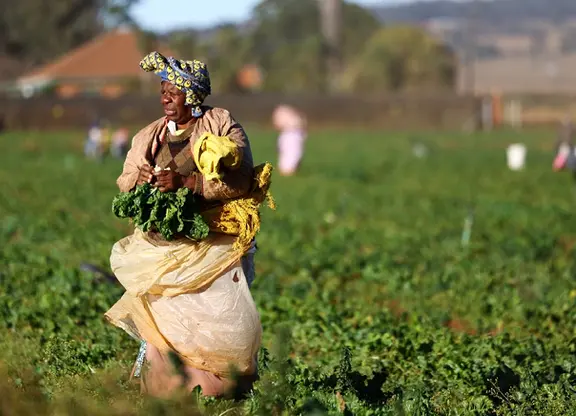Choosing a Most Valuable Player in the WTA is a daunting task because of the unprecedented degree of parity the tour produced in 2017. The stage was set in early February, when Serena Williams left the tour after winning the Australian Open in order to give birth. With the departure of the woman who has dominated the WTA for lengthy portions of her 19-year career, the floodgates opened.
So how do you determine an MVP when four different players won Grand Slams and the tour featured five different No. 1 players over 12 months? What counts for more, a great run to the title at a major or day-in, day-out consistency? The accumulated data seems inconclusive and all accomplishments look relative or inconclusive. But here we go:
Overall record: Advantage, Elina Svitolina
The magic number when it comes to winning percentages in tennis is .900, or a 90 percent success rate. The closest anyone came to that magic number was -- somewhat surprisingly -- Svitolina, who finished the year ranked No. 6. She led the tour with a .791 winning percentage, almost five ticks ahead of Karolina Pliskova (.746).
So why the low ranking? It was because of her relatively poor performance at the majors, where her best showing was a French Open quarterfinal. Nevertheless, Svitolina wasn't even ranked in the top 10 at the start of the year. By the end, she had bagged five titles (two more than any of her rivals), and she put together the longest unbeaten streak (15 matches).
Quality titles: Advantage, Garbine Muguruza
Forty-one different players won WTA singles titles in 2017 at 56 events (we're not counting the minor events that took place after the WTA Finals in Singapore). The four Grand Slam champions were Serena, Jelena Ostapenko, Muguruza and Sloane Stephens. Karolina Pliskova and Anastasia Pavlyuchenkova trailed Svitolina with three titles apiece, but a mere five women won two titles. Simona Halep, who finished the year ranked No. 1, bagged only one.
Svitolina's top wins were in Rome and Toronto. Pliskova came through at Brisbane, Doha and Eastbourne. But this category is qualitative, not quantitative, so the nod goes to a player who won only two titles, Muguruza. She won Wimbledon, the most significant tournament of the year, and the Premier 5 tournament in Cincinnati. If you could pick one Grand Slam and one regular tour event to win, it would be hard to top that pair.
Grand Slam performance: Advantage, Venus Williams
How much should Grand Slam events count toward the MVP? "You've got to win a major, you've got to win something big," said Mary Carillo, a Tennis Channel analyst. "I need somebody to go the whole way at a very important tournament and not lose."
It's a reasonable position. But tennis has produced a significant number of players who happened to get a hot hand for two weeks but then cooled off, sometimes for good (Gaston Gaudio? Iva Majoli?). The reality is that the top-ranked woman at the end of this year, Halep, didn't win a major. In fact, five of the top six failed to do that; the exception was Muguruza.
The top priority for every elite player every year is to win a major title, but in the big picture, consistency counts, and nobody was more consistent in Slams than 37-year-old Venus. She was the only player who reached at least the fourth round at every major, as well as the only one who achieved two finals -- plus the WTA Finals in Singapore. She finished 20-4 for the year in Grand Slams. Next best in terms of overall wins: Muguruza, at 17-3.
Consistency: Advantage, Caroline Wozniacki
True, Wozniacki won just two titles this year, but she was in seven finals and got stronger as the year progressed. She handled Svitolina at the WTA Finals, and went on to claim the title, the biggest of her career. It closed out a comeback year that began with Wozniacki ranked No. 19.
Wozniacki's winning percentage of .740 was third best, behind Svitolina and Pliskova. She put herself out there in the trenches, playing more matches (81) than any of her rivals. By year's end she had climbed all the way to No. 3.
Results versus the top 10: Advantage, Wozniacki
Caroline Wozniacki capped off a terrific year by winning the WTA Finals. RAHMAN/AFP/Getty Images
Not only did Wozniacki record the best winning percentage against top 10 players (.700, on a 14-6 record), she also played the most number matches against them. Svitolina was next best, at 11-5 (.680).
The player with the worst record against the elites was Ostapenko, who was just 4-7. Muguruza managed a mere 8-7, while Halep went 6-6. It's further proof of Wozniacki's consistently good results in this volatile year.
Impact on the game: Advantage, Venus
Ideally, an MVP is not just one of the leading players. She is also a person who prospered on the court, but also had a significant, positive impact on the sport and how the public views it.
Williams has done that for years now, but she may have outdone herself in 2017. A runner-up at two majors despite her compromised health (she suffers from Sjogren's Syndrome) and age, she was embraced at every venue by fans who appreciated her effort, humility and love for the game. Venus was also involved in a tragic car accident during the summer that had to affect her performances.
As Stephens said after she ended Williams' US Open run in the semifinals, "Venus, we are following in her footsteps. She's been here. She's represented the game so well as an African-American woman. Maddie [fellow finalist Madison Keys] and I are here to join her and represent just as well as Venus has in the past."
MVP: Venus Williams
No one player was able to distance herself from the pack in 2017, and each top pro had some striking shortcoming. But Williams' ability to overcome age and physical frailty, along with her consistency in the majors and the impact she exerted on her peers as well as the public, makes her our choice.
(ESPN)
 简体中文
简体中文











